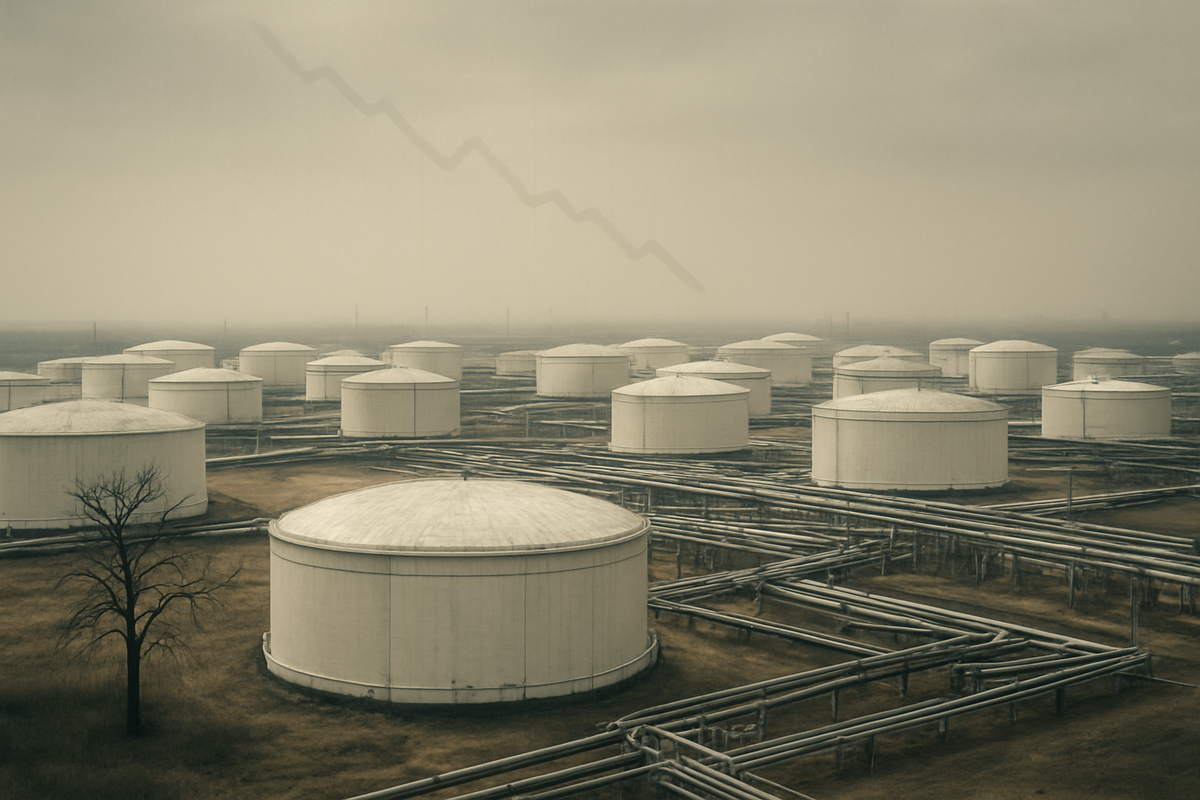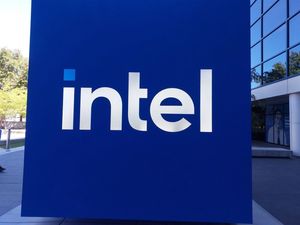
The US Mont Belvieu butane market is currently grappling with a significant downturn, as prices have been in a state of sustained weakness throughout late 2025. This persistent slump is primarily attributable to a confluence of factors: an oversupply of butane stemming from robust domestic production and elevated inventories, coupled with widespread forecasts for a milder-than-normal winter. The combination has created a challenging environment for market participants, eroding traditional seasonal demand expectations and signaling deeper, fundamental shifts in the energy landscape.
This pronounced weakness is evident in key market metrics, with EPC in-well butane prices averaging a mere 83.0 cents per gallon from October 1-27, 2025. This represents a substantial 27.6% decline when compared to the 114.7 cents per gallon recorded during the same period in 2024. Furthermore, the critical ratio of butane to RBOB gasoline futures, a barometer for butane's economic attractiveness as a blending component, has deteriorated significantly, averaging 44.5% in October 2025. This figure falls well below the historical average of 55.6%, underscoring a fundamental demand weakness that extends beyond typical seasonal fluctuations and raising concerns about the immediate profitability of butane-intensive operations.
The Perfect Storm: Record Supply Meets Lukewarm Demand
The current predicament in the US Mont Belvieu butane market is a classic case of supply overwhelming demand, exacerbated by an uncooperative climate. On the supply side, the United States has seen a remarkable surge in natural gas liquids (NGL) production, with butane output from gas processing reaching an unprecedented 636,000 barrels per day (b/d) in June 2025, a notable increase from 578,000 b/d in June 2022. This robust production has led to a significant build-up in domestic butane stocks, which were already at least 14% above year-earlier levels heading into the 2024 (likely 2025) gasoline blending season. Forecasts suggest these inventories could be nearly a third higher by the end of the first quarter of 2026, further cementing the oversupply narrative. The US has transitioned from an NGL importer to a net exporter of propane and butane, highlighting the abundance of domestic supply managed efficiently through extensive salt dome storage facilities at Mont Belvieu, the nation's premier NGL processing hub.
Compounding this supply glut are the persistent forecasts for a milder-than-normal winter across much of the Northern Hemisphere. Historically, butane demand experiences a significant uptick from mid-September onwards as refiners pivot to producing winter-grade gasoline. Butane, being a cost-effective blending component with a higher Reid Vapor Pressure (RVP), is crucial for ensuring gasoline vaporizes effectively in colder temperatures. However, warmer winter outlooks drastically reduce the necessity for higher-volatility winter gasoline formulations, directly suppressing expectations for this crucial seasonal demand surge in the fourth quarter of 2025. This mild weather outlook effectively removes a key pillar of support for butane prices, leaving the market awash in product with insufficient outlets.
Beyond the domestic dynamics, international price signals have also contributed to the downward pressure. An unexpectedly lower contract price announcement from Saudi Aramco in September 2025 for October butane had an immediate ripple effect, contributing to a fall in Mont Belvieu physical prices. This demonstrates the interconnectedness of global NGL markets and how international benchmarks can quickly influence domestic valuations. The current market conditions are thus characterized by values significantly below seasonal norms, struggling to recover from recent price shocks, and facing an uncertain path forward without a substantial shift in either supply fundamentals or weather patterns.
Corporate Fortunes Diverge: Winners and Losers in a Weak Butane Market
The sustained weakness in US Mont Belvieu butane prices is creating a clear bifurcation in corporate fortunes across the energy sector, with significant implications for NGL producers, refiners, petrochemical companies, and even LPG distributors. Companies whose business models are heavily reliant on the production and sale of butane are facing substantial headwinds, while those that consume butane as a feedstock or blending component stand to reap considerable benefits from lower input costs.
On the losing side are primarily NGL Producers. Major integrated oil and gas companies like ConocoPhillips (NYSE: COP), ExxonMobil (NYSE: XOM), and Occidental Petroleum (NYSE: OXY), which are significant producers of NGLs, will see a direct reduction in revenue from their butane sales. This impacts the profitability of their upstream segments and could influence future investment decisions in NGL-rich plays. Independent exploration and production companies such as Gulfport Energy Corporation (NYSE: GPOR), with a focus on NGLs, will also experience diminished realized prices for their butane output, directly affecting their overall revenue, cash flow, and capital allocation for drilling programs. Midstream master limited partnerships (MLPs) like Plains All American Pipeline, L.P. (NYSE: PAA), which handle the gathering, transportation, storage, and fractionation of NGLs, may see compressed margins in their fractionation and marketing segments, as the overall value of the NGLs they process and sell declines. Similarly, NGL Energy Partners LP (NYSE: NGL), a diversified midstream MLP involved in the marketing of NGLs, faces reduced value for its inventory and sales, potentially leading to tighter margins if fixed infrastructure costs remain constant.
Conversely, Petrochemical Companies and certain Refining Companies are poised to be the primary beneficiaries. Petrochemical giants such as Shell Chemical (part of Shell plc - NYSE: SHEL), Sasol (NYSE: SSL), Braskem (NYSE: BAK), ExxonMobil (NYSE: XOM), Chevron (NYSE: CVX), and BP (NYSE: BP) utilize NGLs, including butane, as crucial feedstocks for producing ethylene and other chemical building blocks. Lower butane prices directly translate to reduced raw material costs, leading to improved profit margins for their downstream products like plastics and polymers. This cost advantage can significantly bolster their market position, particularly against producers relying on more expensive feedstocks like naphtha, and may encourage higher utilization rates or expansions at their cracking facilities. Shell and Sasol, with their substantial investments in NGL-fed crackers in the US, are particularly well-positioned to capitalize on this trend.
Refining companies that are net purchasers of butane for gasoline blending also stand to gain. Valero Energy Corporation (NYSE: VLO), for instance, can leverage lower butane prices to reduce its gasoline production costs, especially for winter-grade formulations. This improves their crack spreads—the difference between crude oil and refined product prices—and enhances overall refining margins. Marathon Petroleum Corporation (NYSE: MPC), operating the nation's largest refining system, could also benefit from reduced blending costs. However, as an integrated company with midstream assets (MPLX LP) that include NGL processing, Marathon's overall exposure would be mixed, with potential gains in refining partially offset by reduced NGL production revenue if they are also net sellers of butane. Lastly, LPG Distributors like NGL Energy Partners LP (NYSE: NGL), in their capacity as distributors of butane for heating, could see improved retail margins. Lower wholesale butane prices allow them to offer more competitive pricing, potentially stimulating demand for heating fuels or simply realizing higher profitability on their distribution services, even during milder winter periods.
A Broader Lens: Butane's Role in Evolving Energy and Petrochemical Landscapes
The sustained weakness in US Mont Belvieu butane prices is not an isolated event but rather a significant indicator within the broader tapestry of evolving energy and petrochemical market trends. It underscores the profound impact of the Shale Revolution, the shifting dynamics of global energy trade, and the increasing influence of climate patterns on commodity markets. This situation creates intricate ripple effects, influencing competitive landscapes, prompting policy considerations, and echoing historical precedents that offer insights into potential future trajectories.
At its core, the current butane glut is a direct consequence of the US NGL Production Boom. The technological advancements of the Shale Revolution have unlocked immense reserves of natural gas and associated liquids, particularly in prolific basins like the Eagle Ford, Marcellus, and Utica. This abundance has transformed the United States into the world's largest exporter of butane, with record volumes consistently shipped to key markets in Asia and Africa. The lower domestic butane spot prices, relative to global benchmarks, create attractive arbitrage opportunities that fuel these international shipments, solidifying the US's role as a pivotal global supplier. Furthermore, the low cost of butane enhances its appeal as a petrochemical feedstock. Steam crackers, which are the backbone of the plastics industry, increasingly favor lighter, shale-derived feedstocks like ethane, propane, and butane over traditional naphtha due to their cost-effectiveness and ready availability. This trend aligns with a broader industry pivot, enhancing the competitiveness of US petrochemical producers on the global stage.
The ripple effects of this pricing dynamic are far-reaching. While US Butane Producers face margin pressure due to the diminished value of their product, US Petrochemical Producers stand to gain a substantial competitive advantage from lower feedstock costs. This allows them to improve profit margins, potentially expand operations, and outcompete facilities reliant on more expensive inputs. Internationally, countries that are major importers of US butane, particularly in Asia and Africa, benefit from reduced acquisition costs for industrial applications and residential use. In many developing nations, where governments subsidize butane as a cleaner alternative to traditional cooking and heating fuels, sustained low prices facilitate these environmental and social policies, directly benefiting lower-income households. However, producers in other butane-exporting regions face increased competition from the competitively priced US supply, potentially eroding their market share and profitability.
From a regulatory and policy perspective, trade policies continue to play a crucial role. Geopolitical tensions, such as those between the US and China, and the imposition of tariffs have historically introduced volatility into butane pricing and export flows. Any shifts in these policies, such as tariff waivers, could rapidly alter market dynamics. The ability to export record volumes of butane is also contingent on the ongoing development and regulatory support for energy infrastructure and export terminal capacity along the US Gulf Coast. Logistical constraints, such as those experienced in the Panama Canal, can also indirectly influence the viability of exports and global supply chains.
Historically, the current situation echoes several recurring patterns. The Shale Gas Revolution itself represents a fundamental shift in energy economics, creating a sustained abundance of NGLs that has fundamentally altered feedstock economics for both petrochemicals and fuel blending. The seasonal nature of butane demand for gasoline blending is a well-established factor, with mild winter forecasts consistently dampening demand and suppressing prices, a pattern observed in recent years. Moreover, the significant influence of major producers like Saudi Aramco on global and Mont Belvieu butane prices through their monthly contract price announcements highlights a historical precedent where pricing decisions by key international players can trigger rapid market adjustments through arbitrage, affecting valuations globally. These historical parallels suggest that while the current situation is challenging, the market has mechanisms for adjustment, though the path to recovery may be complex and multi-faceted.
The Road Ahead: Navigating Butane's Uncertain Future
The immediate and long-term trajectory of the US Mont Belvieu butane market is characterized by a delicate balance of persistent challenges and evolving opportunities. While the short-term outlook remains clouded by oversupply and mild weather forecasts, strategic adaptations and underlying demand shifts could pave the way for a more stable, albeit transformed, market in the coming years.
In the short term (3-12 months), the market is likely to remain under pressure. Forward contracts show limited optimism for a significant near-term demand recovery, suggesting that the current weakness, driven by ample supply and subdued winter blending demand, will persist unless substantial catalysts emerge. A colder-than-expected winter across key consumption regions could provide a much-needed boost to butane prices, stimulating demand for both heating and gasoline blending. Similarly, a resolution of geopolitical tensions, particularly those impacting US-China trade, could improve market sentiment and facilitate smoother trade flows. Significant inventory drawdowns, leading to a substantial reduction in current high stock levels, would also signal a positive shift. Ultimately, any supply-side adjustments, such as production curtailments by NGL producers, would be crucial in rebalancing the market.
Looking further out into the long term (2025-2035), the global butane market is projected to experience growth, albeit with shifting demand drivers. Analysts forecast the global butane market to grow from USD 296.7 million in 2025 to USD 460.8 million by 2035, at a Compound Annual Growth Rate (CAGR) of 4.5%. The US butane market specifically is expected to grow at a CAGR of 3.9% from $18.0 billion in 2023 to $23.5 billion by 2030. This growth is anticipated despite a projected decline in residential use of butane in the US, which is expected to be offset by a burgeoning demand from the petrochemical sector. The petrochemical industry's appetite for butane as a crucial feedstock for producing plastics, synthetic rubber, and other chemicals is a significant long-term growth driver, with refineries in Texas and Louisiana already adapting alkylation units for higher butane throughput. Furthermore, continued export growth to markets like Mexico and Canada, leveraging existing US Gulf Coast infrastructure, and potential new terminals for Asian markets, will underpin demand.
To navigate this evolving landscape, strategic pivots and adaptations will be essential for industry players. Continued investment in infrastructure development and optimization, including new fractionators at Mont Belvieu and expanded storage and transportation capacity, will be critical to balance regional supply-demand disparities and debottleneck export flows. Market diversification will also be key, requiring the development of new applications for butane, such as in pharmaceutical extraction or portable heating systems. Increased petrochemical integration, where producers and refiners more flexibly utilize butane in steam crackers for C₄ extraction streams, will allow for adaptable butadiene and raffinate production. Furthermore, aggressive export strategies, leveraging the US's position as a leading NGL producer, will be vital for tapping into growing international markets. As environmental regulations tighten, investment in cleaner fuels and bio-butane alternatives will also become increasingly important.
The market faces both emerging opportunities and significant challenges. Opportunities include robust petrochemical feedstock demand, particularly from new world-scale crackers in the Asia-Pacific region, and the increasing adoption of LPG (containing butane) for cooking and heating in developing economies driven by urbanization and a push for cleaner fuels. Midstream players are also investing in deep-cut cryogenic plants to enhance NGL extraction efficiency, further supporting supply. However, challenges loom, including continued price volatility influenced by crude oil and natural gas prices, stringent environmental regulations, competition from alternative components, ongoing geopolitical risks, and broader energy transition policies that could pressure long-term demand for traditional hydrocarbon fuels.
Considering these factors, several potential scenarios emerge. The most likely short-term outcome is a prolonged period of oversupply and low prices, especially if mild winter conditions persist, trade tensions remain unresolved, and production levels are not significantly curtailed. This could lead to reduced profitability for producers and financial distress for some smaller players. In the long term, a gradual recovery driven by petrochemical demand and exports is a more probable scenario. This would see prices stabilize and modestly increase, driven by industrial feedstock demand rather than seasonal fuel blending, with the US solidifying its role as a key global NGL exporter. While less likely, a short-term price spike due to an unexpected severe winter or major geopolitical disruption remains a possibility, offering a brief reprieve but likely unsustainable without fundamental shifts. Finally, a long-term challenge could arise from an accelerated shift to bio-butane or alternative fuels, driven by stricter environmental regulations, which would diminish demand for conventionally produced butane and necessitate significant investment in new production methods or a complete pivot for some industry participants.
The Butane Reckoning: A Market in Flux Awaits Its Next Chapter
The sustained weakness observed in the US Mont Belvieu butane market throughout late 2025 represents a critical juncture, reflecting a complex interplay of oversupply, subdued demand, and global market forces. This period of unprecedented pressure, particularly during a time typically marked by seasonal recovery, underscores a potential recalibration of market expectations and strategies for natural gas liquids. The immediate future remains heavily contingent on a few pivotal factors, while the long-term outlook suggests a market in transition, driven by evolving industrial demands and global trade dynamics.
The key takeaways from this challenging period highlight the severity of the downturn. Mont Belvieu butane prices have languished, with EPC in-well butane averaging a mere 83 cents per US gallon during the first 27 days of October 2025. This marks a significant 27.6% decline from the 114.7 cents per US gallon recorded in the same period of 2024, defying typical seasonal upticks expected as refiners prepare for winter gasoline blending. A mild winter outlook has been a primary culprit, dampening this crucial demand. Compounding the issue, butane's economic attractiveness relative to RBOB gasoline futures has deteriorated sharply, averaging only 44.5% of RBOB gasoline's value in October 2025, down from 55.6% a year prior. Furthermore, external shocks, including Saudi Aramco's lower October contract price announcement and renewed US-China trade tensions, have exacerbated the weakness, pushing butane to a six-month low and signaling a global readjustment of valuations.
Moving forward, the immediate assessment of the market hinges significantly on the progression of winter weather. A colder-than-expected winter could provide a much-needed stimulus, boosting demand for gasoline blending and heating, thereby offering a potential lifeline to butane values. However, market participants are increasingly recognizing a shift in fundamental market structures, suggesting that historical pricing mechanisms may no longer fully apply, necessitating new analytical frameworks. In the longer term, the resolution of trade talks between the US and China will be a crucial determinant for a sustained market recovery.
The significance and lasting impact of this sustained weakness are profound. It poses considerable challenges for traders and industry stakeholders operating within America's primary natural gas liquids hub. The rapid transmission of pricing decisions across global markets, exemplified by Saudi Aramco's contract price adjustments, underscores the undeniable interconnectedness of the international energy landscape and the immediate, often dramatic, impact of global events on local markets. This period of weakness, occurring during a time usually characterized by seasonal recovery, suggests a potential recalibration of market expectations and a forced re-evaluation of strategies for natural gas liquids producers, processors, and consumers alike.
For investors looking ahead in the coming months, several key indicators warrant close attention. Foremost among these are winter weather forecasts; any shifts towards a colder winter could signal increased demand and a potential price rebound. Developments in US-China trade relations, particularly concerning tariffs and fees, will have a direct impact on market sentiment and prices. Saudi Aramco's monthly contract price announcements will continue to wield significant influence over global butane prices, necessitating careful monitoring. The relationship between butane and RBOB gasoline futures will remain a critical metric for assessing blending profitability and demand. While not always publicly detailed for butane specifically, broader NGL inventory levels will offer insights into the overall supply-demand balance. Finally, while technical analysis (e.g., open interest, ratings) can offer short-term trading insights, it should always be combined with thorough fundamental analysis given the constant evolution of market conditions.
This content is intended for informational purposes only and is not financial advice






